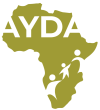An example by Global Partnership for Education:
“The Global Partnership for Education is exclusively dedicated to giving more children in the poorest countries, especially girls, the education they need to unlock their full potential.
As a partnership and a fund, GPE mobilizes global and national investments and brings partners together to help governments build strong education systems, based on data and evidence.

